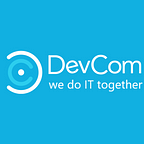How to Migrate the On-Premise Application to AWS
Data is at the heart of successful application deployments, analytic workflows, and innovative machine learning. When migrating data to the cloud, you need to understand, among other things, where the data is for different use cases, what types of data are moving, and what network resources are available.
The cloud provides you with various benefits, including significant cost savings, increased productivity, resiliency and service continuity, and business agility. Organizations around the world realize the importance of the cloud.
Migrate to AWS means any movement of the workload from on-premises, hosted, or other public clouds.
REASONS TO MIGRATE ON-PREMISE APPLICATION TO AWS?
On-premise cloud hosting is the traditional approach in which all the required software and infrastructure for a given application reside in-house. On a larger scale, this could mean the business hosts its own data center on-site.
Running applications on-site includes buying and maintaining in-house servers and infrastructure. Apart from physical space, this solution demands a dedicated IT staff qualified to maintain and monitor servers and their security.
Cloud computing is an umbrella term that refers to computing services via the internet. By definition, it is a platform that allows the delivery of applications and services. These services include computing, storage, database, monitoring, security, networking, analytics, and other related operations.
The key characteristic of cloud computing is that you pay for what you use. The cloud service provider also maintains its network architecture, giving you the freedom to focus on your application.
For companies considering their first cloud migration, you’ll want to take into account a lot of factors — from the benefits and the risks to the cloud service model and type that is right for your business.
The 8 reasons for switching from on-premise to the cloud:
- Drive IT costs down;
- Increase security in the cloud;
- Reach wider markets;
- Accelerate deployments;
- Increase customer satisfaction;
- More time on innovation.
Cons of using on-premises software:
- The training cost is significantly higher for this model;
- The cost involves and associated risks should be managed by the customer;
- A solid security policy is required;
- Disaster recovery has to be managed by the customer side;
- Long-time commitment is necessary to maintain longer implementation;
- Needed wider bandwidth to let a large number of users access the same application.
THE BENEFITS OF CLOUD OVER ON-PREMISES
Widespread adoption of cloud has led many vendors to shift focus from on-premise solutions to cloud delivery models, giving rise to the question ‘which is best for my business’?
The fundamental difference between cloud-based and on-premises software is where it sits. The on-premises software is installed locally on your enterprise computers and servers, while the cloud software is hosted on the vendor’s server and accessed through a web browser.
There are some fundamental differences between on-premises and the cloud. Choosing your business’s right path depends entirely on your needs and what you are looking for in a solution.
⇒ Deployment
On-Premises: Resources are deployed in-house and within an enterprise’s IT infrastructure. An enterprise is responsible for maintaining the solution and all its related processes.
Cloud: Resources are hosted on the premises of the service provider, but enterprises can access those resources and use them as much as they want at any given time.
⇒ Cost
On-Premises: Enterprises are responsible for the ongoing costs of server hardware, power consumption, and space.
Cloud: Enterprises only need to pay for the resources they use, with none of the maintenance and upkeep costs, and the price adjusts up or down depending on how much is consumed.
⇒ Control
On-Premises: Enterprises retain all their data and are entirely in control of what happens to it, for better or worse. Companies in highly regulated industries with extra privacy concerns are more likely to hesitate to leap into the cloud before others because of this reason.
Cloud: Data and encryption keys reside within your third-party provider, so if the unexpected happens and there is downtime, you may be unable to access that data.
⇒ Security
On-Premises: Companies with extra sensitive information, such as the government and banking industry, must have a certain level of security and privacy that an on-premises environment provides. Despite the cloud’s promise, safety is the primary concern for many industries, so an on-premises environment, despite some of its drawbacks and price tag, makes more sense.
Cloud: Security concerns remain the number one barrier to a cloud computing deployment. There have been many publicized cloud breaches, and IT departments around the world are concerned. From personal information of employees such as login credentials to a loss of intellectual property, the security threats are real.
⇒ Compliance
On-Premises: Many companies these days operate under some form of regulatory control, regardless of the industry. Perhaps the most common one is the Health Insurance Portability and Accountability Act (HIPAA) for private health information. Still, many others, including the Family Educational Rights and Privacy Act (FERPA), contain detailed student records and other government and industry regulations. For companies that are subject to such rules, they must remain compliant and know where their data is at all times.
Cloud: Enterprises that choose a cloud computing model must do their due diligence and ensure that their third-party provider is up to code and compliant with all of the different regulatory mandates within their industry. Sensitive data must be secured, and customers, partners, and employees must have their privacy ensured.
More: https://devcom.com/tech-blog/migrate-the-on-premise-application-to-aws/
